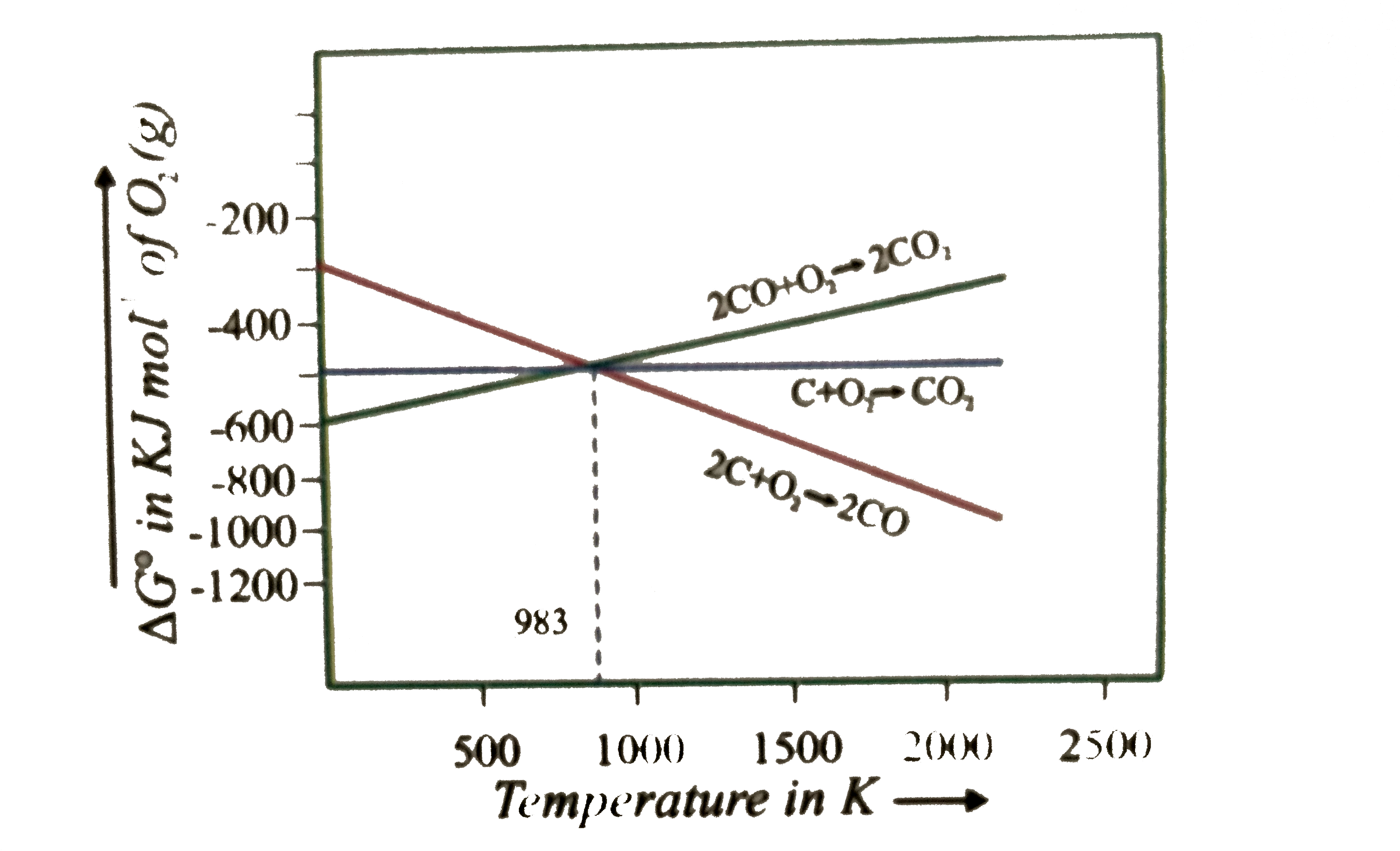Correct statement(s) regarding the graph

I) Above 983K, Carbon can reduce any metal oxide at high temperature and itself oxidised to CO
(II) In the first reaction (Formation of CO2 from 'C') ΔS0=0&ΔG0 ramains nearly same, i.e. it is independent of temperature
III)In the second reaction, (formation of CO), there is increase is entropy & ΔS0=+ve&ΔG0 becomes more -ve with increase in temperature
(IV)In third reaction(formation of CO2 from CO) there is a decrease in entropy ΔS0=−ve&ΔG0 becomes less -ve with increase in temperature
Only I
I,II only
I,II,III only
All
The correct Answer is:4
Similar Questions
Knowledge Check
Carbon can reduce ferric oxide to iron at a temperature above 983K, because
Acarbon monoxide formed is thermodynamically less stable than ferric oxideBcarbon has a higher affinity towards oxygen than ironCfree energy change for the formation of carbon dioxide is less negative than that for ferric oxideDiron has a higher affinity towards oxygen than carbonFor the formation of metal oxide, δG∘ __________ with increase in temperature.
AincreasesBdecreasesCremains constantDnone of theseIn which of the following reactions,standard reaction entropy change(ΔS∘)is positive and standard Gibb,s energy change(ΔG∘)decreases sharply with increasing temperature?
AMg(s)+12O2(g)→MgO(s)B12C(graphite)+12O2(g)→12CO2(g)CC(graphite)+12O2(g)→CO(g)DCO(g)+12O2(g)→CO2(g)
Will the yield of C or F Increases with increase in temperature ?
A+2B → C ΔH=+ve
2D + E → F ΔH=-ve
View SolutionIn which of the following reactions, standard reaction entropy change (ΔS∘) is positive and standard Gibb's energy change (ΔG∘) decreases sharply with increasing temperature?
View SolutionIn which of the following reactions, standard reaction entropy changes (ΔS) is positive and standard Gibbs energy change ('DeltaG) decreases sharply with increasing temperature?
View SolutionIn which of the following reactions,standard reaction entropy change(ΔS∘)is positive and standard Gibb,s energy change(ΔG∘)decreases sharply with increasing temperature?
View SolutionIn which of the following reactions,standard reaction entropy change(ΔS∘)is positive and standard Gibb,s energy change(ΔG∘)decreases sharply with increasing temperature?
View Solution
